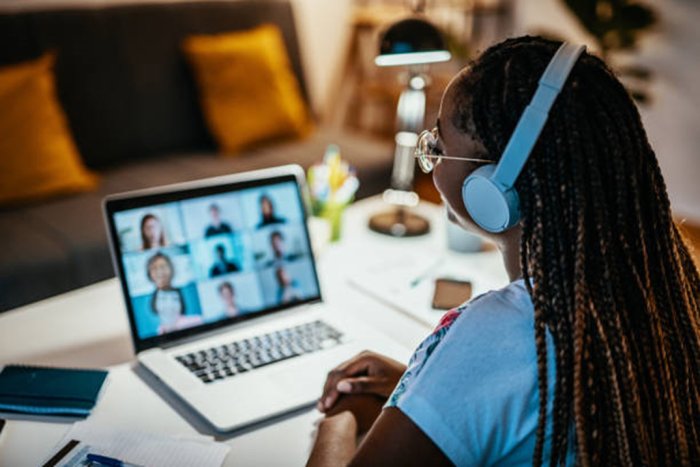Online Learning Challenges And How Students And Educators Can Overcome Them
September 1, 2023
The digital learning space has grown tremendously in recent years. This development results from tech advancement and the need to cut costs. But the coronavirus pandemic was the biggest contributor, forcing the world into online work and education systems.

A few years have passed, and online learning still runs the education sector, bringing the convenience of flexible, commute-free learning. But the digitization of learning has come with its hurdles. As many schools still try different approaches to online learning, hurdles and mistakes are inevitable.
Here are the biggest and most effective ways to beat online learning setbacks.
Digital Literacy
Online learning programs have students and educators spread in different geographical locations. Consequently, a section of them might have problems accessing the internet. This problem isn't just location-based; socioeconomic disparities can contribute immensely. Even inaccessible areas, some locations might have limited bandwidth speeds, affecting communication, page loading, and file transfer. This hurdle is widespread, with about 43 million American citizens struggling with it.
Fortunately, there's a solution. Education design and IT staff can collaborate to ascertain the right quality and size of learning material. Generally, compressing large files can prove effective.
Too Many Distractions
Lack of physical presence comes with lots of distractions. Unlike traditional classes, the distractions are tempting and vivid. This hurdle is widespread for students, educators, and those in their careers. It's among the leading reasons why scholars seek essay writer service providers.
Scholars can navigate the hurdle by creating an enabling setup at home—no need to invest much. One should create what they think is ideal, a space that allows them to think, read, and learn optimally. Discussing your schedule with the people you live with and using productivity tools and techniques is also important. Finally, class participants should keep their gadgets in silent mode.
On the other hand, educators should make class sessions engaging and interactive. Like students, they should also leverage productivity applications to enhance their time management.
Time Management
The primary attraction of online education is learning convenience and flexible programs. But numerous responsibilities and family obligations can make it difficult to utilize your time effectively. That's why every student needs great time management skills.
Fortunately, scholars have multiple ways to improve their time management skills. For instance, one should first identify the things that waste their time. For instance, well-informed scholars use specialized tools to limit social media access and other disruptive websites. Others also break down larger target tasks into smaller errands and seek help whenever they feel stuck in a challenge.
Finally, avoid multitasking. Contrary to what most people believe, multitasking can hamper productivity. Therefore, prioritize one task at a time as you move gradually toward your bigger goals.
Feelings of Isolation
Human beings are the most social animals. Interactions and knowing others are normal in our lives, so digital and hybrid classrooms pose a unique challenge that could limit learning. While most of them can communicate with their colleagues over the relevant tools, the result would differ from what they'd achieve through physical interaction.
Digital classes allow students to learn flexibly, pursue career goals, and follow their interests. However, doing all these without their tutors and classmates next to them can cause a feeling of isolation. In the long run, they will likely feel disengaged from learning and engage differently than in the normal classroom.
It can be frustrating when you can't get answers to your concerns from your tutors instantaneously. However, you can easily overcome the challenge through several crucial steps. First, check out if your institution offers staff or student support. Next, you'll search for any networking opportunities. Finally, you want to ensure you get the most out of your class session by interacting with colleagues as much as possible.
Lack of Personalization
Most schools tend to assume that everyone in a particular group or role requires standard training. This explains why students study programs that don't align with their learning styles or address their needs.
Institutions can go beyond this one-size-fits-all approach and explore personalized learning paths. The latter allows scholars and educators to suggest their educational views and determine the most effective strategies. When all stakeholders have more anatomy, the learning outcomes will be better. In the end, the entire institution benefits.
Course Structure
The difficulties of online learning go beyond psychological or technical. Sometimes, the course structure could be the hindering factor that prevents scholars from achieving their academic goals. Generally, a great online course should be engaging and comprise understandable topics. In addition, the course activities should be interesting.
Instructors can check all these requirements by following several best practices for optimizing their instructional designs. For instance, they should gamify class sessions to make the lessons fun and engaging. Others also leverage microlearning to overcome information overload. The best way to overcome this is to subdivide the programs into smaller modules before converting them onto their digestible formats.
Tutors can achieve the best course structures by including more pictures than text-based material. Their programs should also comprise storytelling.
Disabilities and Special Needs
Some learners may experience difficulties learning online because they face specific learning difficulties. For instance, learners can find it difficult to navigate self-paced learning if they have hearing or sight problems.
An institution can solve this intricate issue by evaluating its content to determine if all students can access it. Doing this can provide the required insights to enhance overall usability.
The most common changes institutions make are providing alternative learning options. For instance, the learning platforms may comprise applicable k3eyboard shortcuts, and the video and audio material should have captions. In addition, illustrations and text must include voice-over descriptions. When learning material is readily available and accessible, it gives the impression that the learning program is open to all students.

Digital studies have brought lots of convenience and flexibility. These programs allow students to achieve their academic goals conveniently from anywhere. In addition, tutors can dispense their knowledge to scholars from any location. Unfortunately, these programs are riddled with hurdles. But the above guidelines can help students and tutors push through.
 His Last Day As A Teacher After 36 Years. They Turned It Into A Memory For Life
His Last Day As A Teacher After 36 Years. They Turned It Into A Memory For Life
 Kids Are Loving The Tiny Duck Libraries Popping Up Around New York City
Kids Are Loving The Tiny Duck Libraries Popping Up Around New York City
 A Man Ruined A Beautiful Snowman Display — What Happened Next Was Perfect
A Man Ruined A Beautiful Snowman Display — What Happened Next Was Perfect
 Pet Owners Share Hilarious Stories Of Paying The Vet… Just To Find Out Their Pets Are Weird
Pet Owners Share Hilarious Stories Of Paying The Vet… Just To Find Out Their Pets Are Weird
 Jonathan And Nancy Fell In Love In Real Life — And So Did Their Stunt Doubles
Jonathan And Nancy Fell In Love In Real Life — And So Did Their Stunt Doubles
 Cat Owner Begs Internet For Advice On How To Get Her Cat To Stop Playing Piano
Cat Owner Begs Internet For Advice On How To Get Her Cat To Stop Playing Piano
 Donkey Gets Tricked Into Taking His Medicine — And It’s Adorable
Donkey Gets Tricked Into Taking His Medicine — And It’s Adorable
 I Picked Up My Sister From Work At A Doggy Daycare — Then This Happened
I Picked Up My Sister From Work At A Doggy Daycare — Then This Happened
 Pig’s Friends Couldn’t Handle Seeing Him So Scared
Pig’s Friends Couldn’t Handle Seeing Him So Scared
 Watch A Forensic Scent Dog Track Down A Hidden Pen
Watch A Forensic Scent Dog Track Down A Hidden Pen
 Watch This 4-Year-Old Girl Steal The Show At A Comedy Club
Watch This 4-Year-Old Girl Steal The Show At A Comedy Club
